Month by Month Vegetable Garden Planting Guide
This page may contain affiliate links. Learn More.
It’s hard to keep track of what to plant when in the garden, so check out this zone 7 Month by Month Vegetable Garden Planting Guide to see what you can grow in the garden when. If you are in a higher zone, you can use it two weeks ahead of the dates listed, and if you are in a lower zone, two weeks behind. If you are a beginning gardener, check this out.
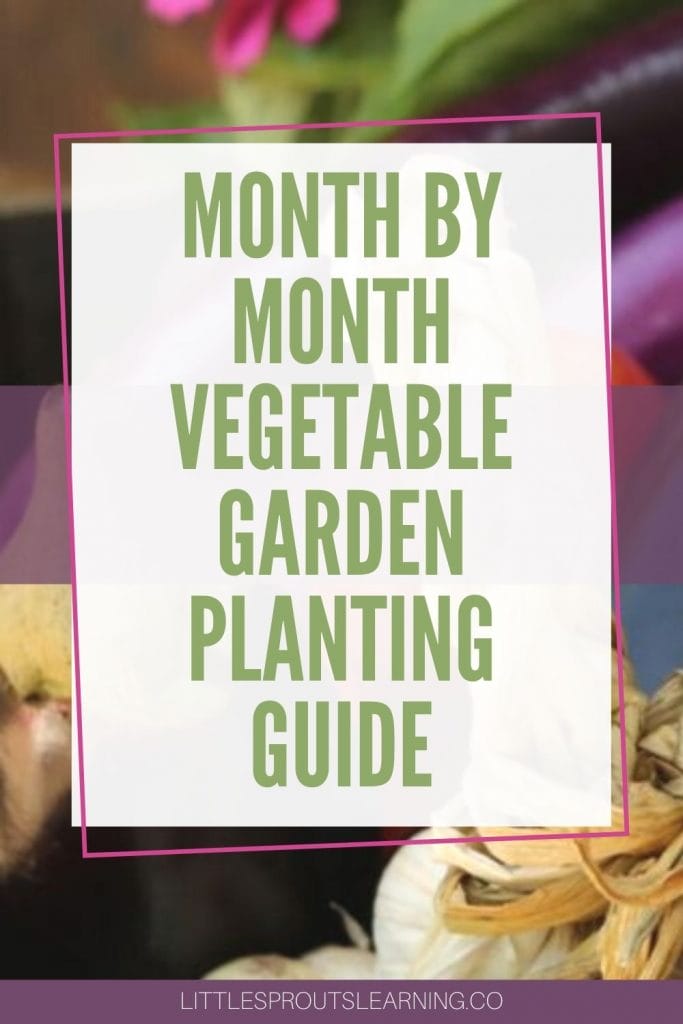
My Little Sprouts and I try our hardest to grow as much of our own food as possible. We like a wide variety of food, so we plant a wide variety of food. It’s hard to keep track of what to plant each month, so here is a guide to what you can grow when.
There are some crops that are easier to grow and are more nutrient-dense and calorie-dense which will save you the most money on your food budget as money gets tighter and tighter. Check out the essential crops to grow for a survival garden here.
Gardening in Oklahoma’s Zone 7 offers a long growing season and a wide variety of planting opportunities. With the right garden plan, home gardeners can enjoy fresh vegetables from late winter through late fall. Understanding planting dates, average frost dates, and Oklahoma’s USDA Zone 7 climate is a critical component of successful vegetable gardening.
The USDA Plant Hardiness Zone Map is a good starting point for determining when to sow seeds or transplant young plants. Zone 7 typically experiences a last spring frost around mid-April and the first fall frost in late October. However, planting calendars should always consider local weather conditions and microclimates, which can vary even by zip code.
Oklahoma garden planning guide
We live in Oklahoma in Zone 7a, so you may have to check the USDA planting zones and see where your planting zone may differ. Click to check it out. In most cases, you can use the same list for your garden planning, but adjust it a few weeks one way or the other to find your optimal planting times. Check out all the Oklahoma growing zones here.
If you are north, you will need to do things a few weeks later, and if you are south, you will need to do things a few weeks earlier. It’s a fairly simple adjustment to your garden planning.
If you want to read the full story of how we got started growing our own food at Little Sprouts and get all the basics to start yourself, check this out. The Journey of the Little Sprouts: A Guide for Growing a Better Tomorrow.
This month by month vegetable planting guide will help you keep track of each type of plant and each growing season in your Oklahoma garden. There’s a free printable link at the very end of the post.
We like to practice succession planting, or planting things every few weeks to spread out our harvest and have a continuous supply throughout the growing season. Our average last frost date is April 15, so if you find yours, you can adjust your planting times according to how many weeks away from ours it is.
This is average, so remember, anything can happen. We had a freeze in the middle of May one gardening year. You never know!
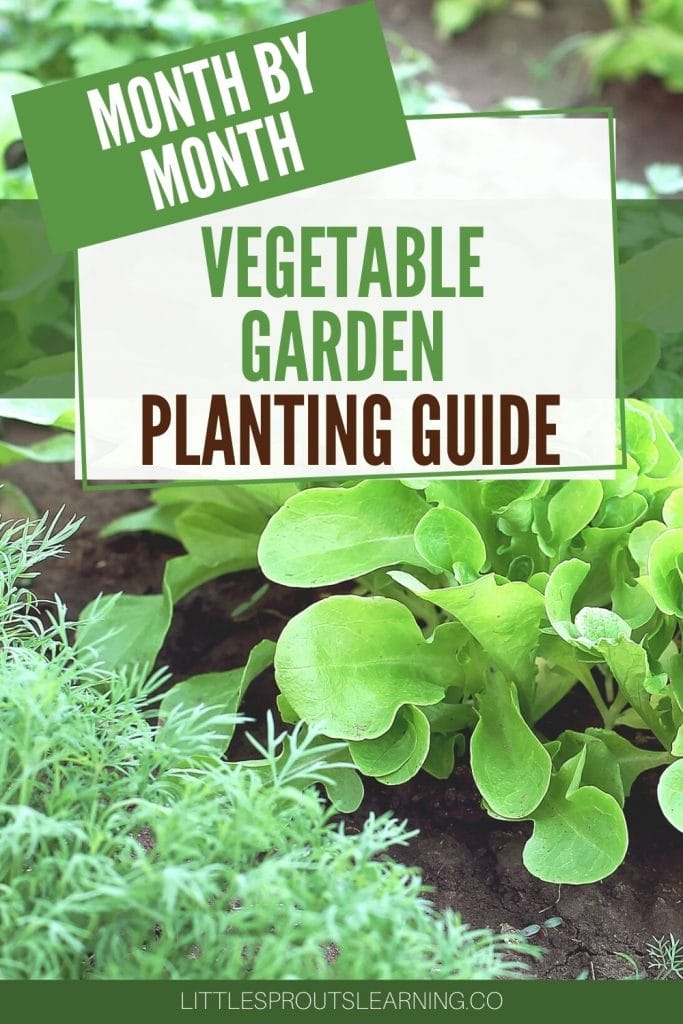
Monthly planting calendar
Planting indoors our directly in the ground
Corn and cucurbits, which include cucumbers, melons, and squashes prefer not to have their roots disturbed and don’t transplant well. Direct seed them in the ground when possible.
Cruciferous and nightshades don’t germinate in the ground as well. Start them in a controlled environment. They are finicky germinators. They like constant temperatures when they sprout.
And don’t forget about plant spacing in the vegetable garden. Plants need enough space to grow. Here are some plants that need to be started indoors:
Seeds that do well when direct seeded include:
And don’t forget about herbs! They are great for growing as well. You can grow:
Month by month planting guide
✔Here’s a link to a great vegetable garden planner you can print right out and use at home! So cute!
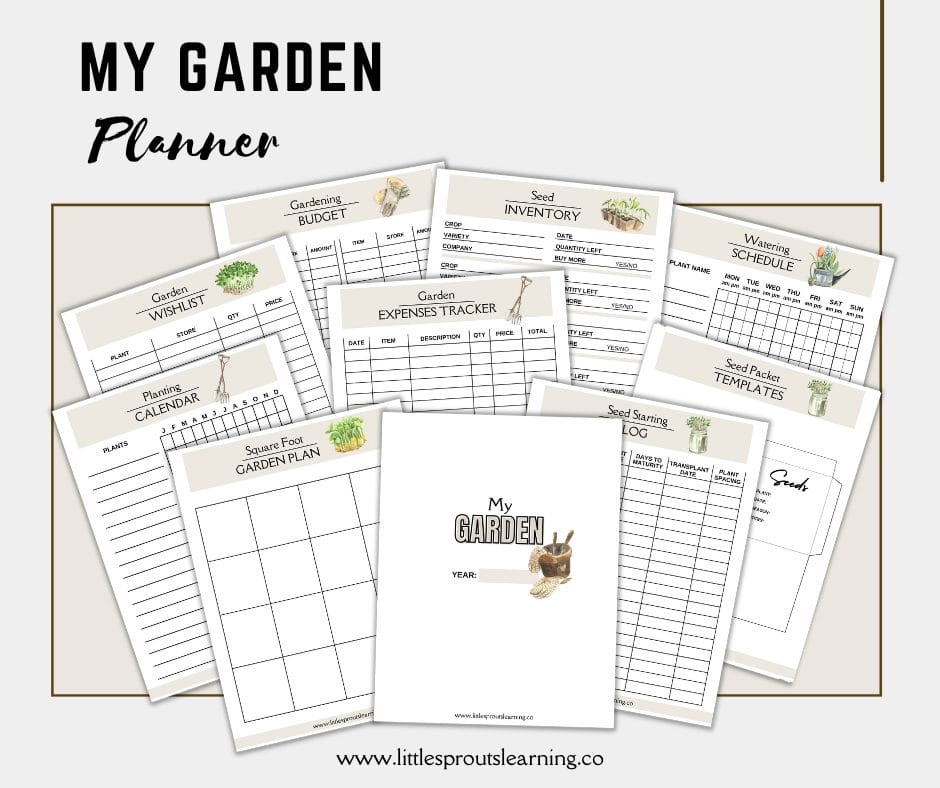
There are some plants that are replanted to grow a new crop, such as garlic and potatoes. You just take a head of homegrown garlic or garlic intended for planting and not eating, and break off each clove and plant it in the ground. A new head will grow from that clove.
Potatoes are cut into individual chunks and cured for two weeks and then planted in the ground. Sweet potatoes are sprouted in water and the “slips” or green parts that grow are planted directly into the ground. Onions do better when you plant a set or tiny onion plant than when you try to grow them from seed. That is our experience anyway, anything is possible.
Here in the deep summer, it’s too hot to plant anything. These months are filled with harvesting and struggling to keep your plants alive and keep them from drying out too fast. You may be able to plant some things during this time, but not usually. Let your instincts guide you in the garden.
Check out this printable garden journal for kids from Mama on the Homestead. So cute!

Zone 7 planting schedule
This is the zone 7 planting schedule we use at Little Sprouts. For a free printable copy, scroll to the end and click on the link.
Although it’s cold and not ideal for outdoor planting, January is the perfect time to plan your garden. Order seeds, clean and repair garden tools, and start preparing beds by adding compost or mulch.
Indoor Planting:
- Start onions and leeks from seed indoors
- Begin celery and herbs like parsley and oregano
Garden Tasks:
- Test soil pH and nutrient levels
- Sketch your garden layout and crop rotation plan
February:
- Cabbage-Plant
- Carrots-Seed
- Cauliflower-Plant
- Fava Beans-Seed
- Swiss Chard-Seed
- Kohlrabi-Seed
- Lettuce-Seed or Plant
- Onion-Sets or Plant
- Peas-Seed
- Potato-Tuber pieces
- Spinach-Seed
- Kale-Seed
Garden Tasks:
- Build raised beds
- Direct sow cover crops in unused areas
March:
- Cabbage-Plant
- Carrots-Seed
- Cauliflower-Plant
- Swiss Chard-Seed
- Kohlrabi-Seed
- Lettuce-Seed or Plant
- Onion-Set or Plant
- Peas-Seed
- Potato-Tuber Pieces
- Radish-Seed
- Spinach-Seed
- Broccoli-Plant
- Kale-Seed
- Herbs-Plants
Garden Tasks:
- Mulch to suppress weeds and protect soil moisture
- Keep row covers handy for surprise cold snaps
April:
- Radish-Seed
- Green Beans-Seed
- Pinto Beans-Seed
- Cucumber-Seed or Plant
- Pumpkin-Seed
- Summer Squash-Seed or Plant
- Corn-Seed
- Honeydew Melon-Seed
- Cantaloupe-Seed
- Herbs-Plants
- Flowers-Seed or Plants
Garden Tasks:
- Harden off transplants before planting
- Water regularly as temperatures begin to rise
May:
- Melons-Seed
- Cucumber-Seed or Plant
- Green Beans-Seed
- Pinto Beans-Seed
- Okra-Seed
- Pepper-Plant
- Tomato-Plant
- Pumpkin-Seed
- Summer Squash-Seed
- Winter Squash-Seed
- Sweet Potato-Plant (Slips)
- Tomatillos-Plant
Succession Planting:
- More lettuce, carrots, radishes for extended harvests
Garden Tasks:
- Stake tomatoes and trellis cucumbers or beans
- Apply mulch to conserve water and reduce weeds
Vegetable planting guide zone 7
June:
- Cucumber-Seed
- Green Beans-Seed
- Pinto Beans-Seed
- Okra-Seed
- Pepper-Plant
- Tomato-Plant
- Summer Squash-Seed
- Winter Squash-Seed
- Sweet Potato-Plant (slips)
- Tomatillo-Plant
Garden Tasks:
- Watch for aphids, squash bugs, and hornworms
- Start preparing a spot for fall crops by mid-to-late June
September:
- Cabbage-Plant
- Carrots-Seed
- Cauliflower-Plant
- Swiss Chard-Seed
- Kohlrabi-Seed
- Lettuce-Seed or Plant
- Onion-Set or Plant
- Peas-Seed
- Potato-Tuber Pieces
- Radish-Seed
- Spinach-Seed
- Broccoli-Plant
- Kale-Seed
Garden Tasks:
- Remove dead summer plants
- Add compost to improve fall garden beds
October:
- Cabbage-Plant
- Carrots-Seed
- Cauliflower-Plant
- Swiss Chard-Seed
- Kohlrabi-Seed
- Lettuce-Seed or Plant
- Onion-Set or Plant
- Peas-Seed
- Potato-Tuber Pieces
- Radish-Seed
- Spinach-Seed
- Broccoli-Plant
- Kale-Seed
- Garlic-Clove
Garden Tasks:
- Harvest mature fall crops
- Begin putting beds to rest for winter
Gardening month by month
What to do in the garden in
Vegetable Gardening in the Winter in Oklahoma
Oklahoma planting chart
Oklahoma’s climate gives gardeners a chance to grow vegetables in both spring/early summer and again in late summer/fall. Many cool-season crops do best in early spring and again in fall. Heat-loving crops like okra, melons, and sweet potatoes thrive in the hot summer months.
Zone 7 includes a wide range of last and first frost dates. In eastern Oklahoma, the last frost is often in mid-April and the first in late October. But sudden cold snaps or heat waves can happen. Keep row covers, shade cloth, and mulch on hand for weather extremes.
Oklahoma summers can be dry and scorching. Most vegetables need 1–1.5 inches of water per week. Water deeply and less frequently to encourage strong root systems, and mulch to retain moisture.
Grow vegetables your family enjoys. Focus on staple crops like tomatoes, peppers, cucumbers, and leafy greens. Mix in fun items like heirloom varieties or unusual crops to keep things exciting.
Extend the Season
Use row covers, cold frames, or low tunnels to keep cool-season crops alive longer into the fall and get an early start in spring. This can stretch your harvest window by several weeks.
What are you planning to plant in the garden? I hope this vegetable garden planting guide helps you work it out. If you want to check out how to plan your garden, click here. Happy planting!
Free printable month by month garden planting guide
Month by month garden planting guide free printable
- Always refer to the USDA plant hardiness zones and planting calendars based on your zip code.
- Use seed packet information for details on sowing seeds, soil temperature, and maturity.
- Consider your family size when planning—plant only what you can reasonably eat or preserve.
- Use row covers or cold frames to extend growing seasons.
- Compost, mulch, and water consistently for soil health.
- Start transplants indoors in peat pots or trays to give your plants a head start.
With the right timing, resources, and care, home gardeners in Zone 7 can enjoy a productive and rewarding gardening year, from late February all the way to late fall. Whether you’re growing your own vegetables to reduce grocery bills or just enjoy the hobby, Oklahoma is a fantastic place to grow a wide range of crops nearly year-round.
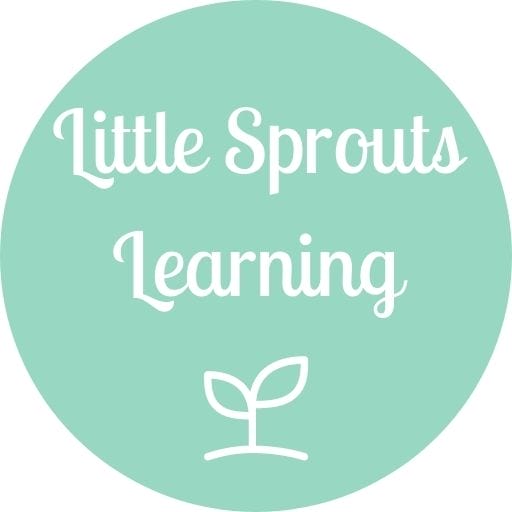




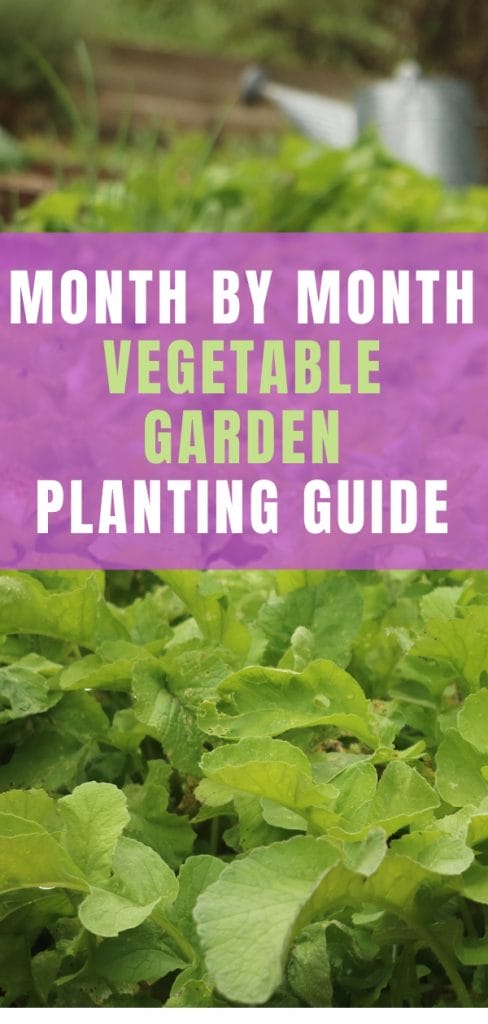
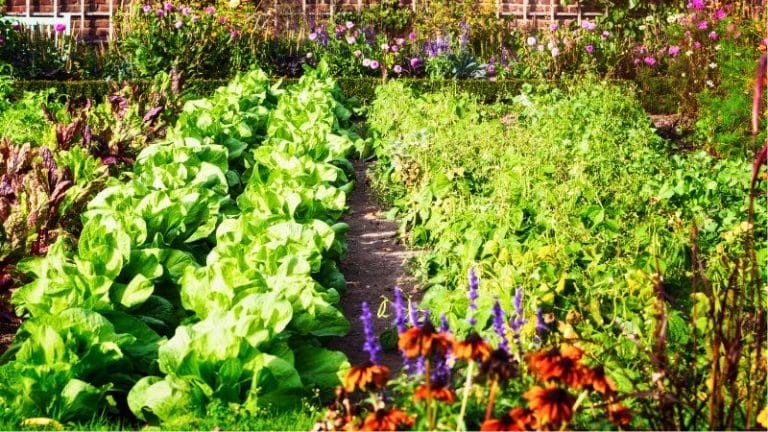





I’m in zone 6 Colorado so what can I plant now
You could start seeds indoors for most everything like tomatoes, cucumbers, peppers, broccoli, cauliflower, etc. If you wanted to plant outside now you might be able to do onions and can do white potatoes if your ground is workable. Thanks for reading the blog!
Thank you so much for the planting guide. I’ve been needing something like that. Simple and so easy to see what I need. And bonus points it’s from Oklahoma (Go Pokes!)
I’m so glad it was helpful for you. Thank you for checking it out! (And yes, go Pokes!)
What a wonderful article; helping the next generation to know how to garden to watch things grow and food for them. The Vitamin D and good exercise also helps the kids too!
I had a daycare in my home for several years and found that the little ones want to do everything you do; from dusting to baking and everything outside.
Love your article and great tips!
Thank you so much!
I live in the Maryland area, do you have recommendation for the best soil to use.
Check out if your soil is clay, sandy, or organic matter and amend it. If it’s mostly clay, add compost and sand or peat, if it’s mostly sand, add compost, if it’s organic matter, plant directly. If you are doing raised beds, I like to build soil like this article shares. Dirty Secrets of Garden Soil.
I love to plant veggies
Me too. Thanks for checking out the article.
Christina,
What a lovely page you have. How wonderful that you are teaching this to the children in your care. My babies are in college now, but I would have loved it if they had an opportunity to garden at childcare. I live in northern California (zone 9b) and work at a large agriculture university where I have access to a lot of master gardeners, but I would rather ask you a garden question. I’m a big tomato, cucumber, and squash gardener. This will be my first year ever to do green beans. From what I have read, it says to plant seed directly into the garden bed and not start seeds indoors. Do you have any tips or thoughts on that? Thank you. Gina
Hi Gina, thanks so much for your comments and for reading the post. Yes, i would totally direct sow green bean seeds in the ground. That’s what we do and I have read that they don’t like to be transplanted once they sprout so they like that best. They have a fairly short growing season, so there’s no need to rush getting them planted inside anyway. Thanks for your question. Have a great day!
Great post! The planting guide is very helpful and my sister will be very glad to have it for planning her garden. My daughters will be very interested of your post too. The love to help me in the garden. Happy gardening!
Happy gardening to you too and thanks so much! 🙂
I didn’t realize we are neighbors, of sort, both living in Oklahoma!
I love gardening, probably because my Dad enjoyed it so much.
This will be my first Spring in our house (we recently moved here
from Louisiana) so will probably just plant a few container things.
But I’ll enjoy seeing your garden. BTW, your little Sprouts are
adorable!
Thank you! I’m glad you love to grow things, it’s so beneficial in so many ways. Thanks for checking out the article. 🙂 Come back and see us!
Great tips.
Thank you!